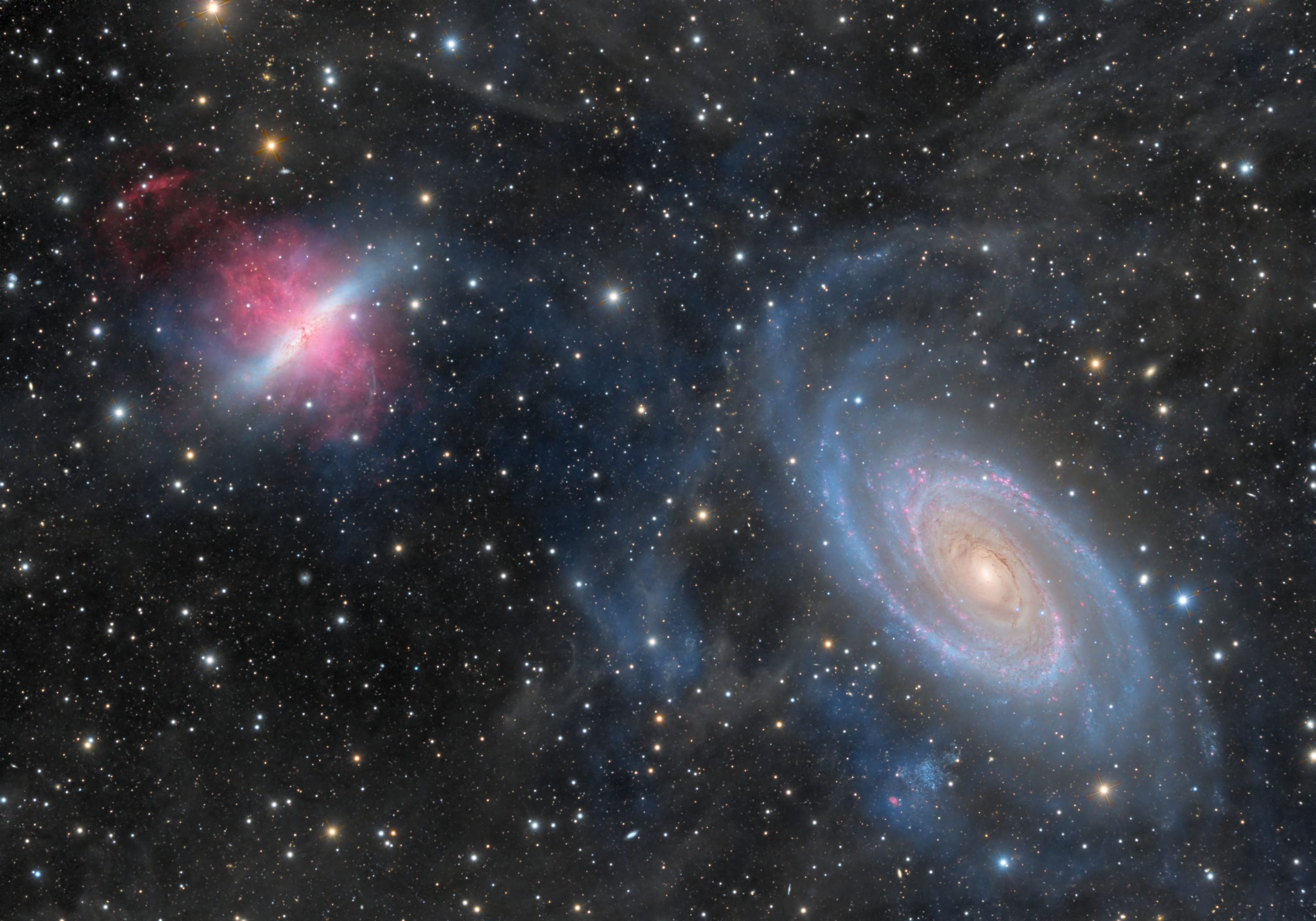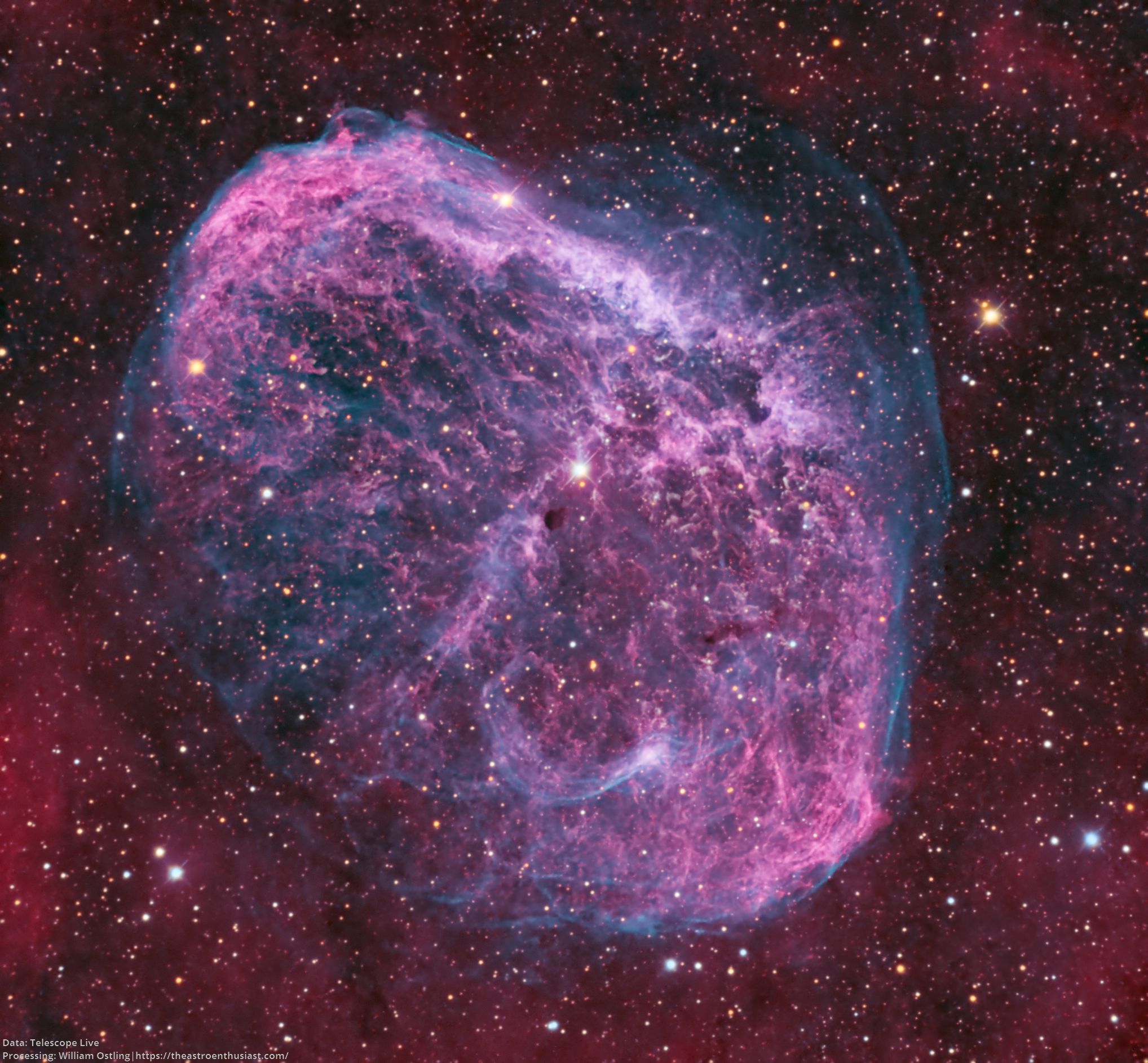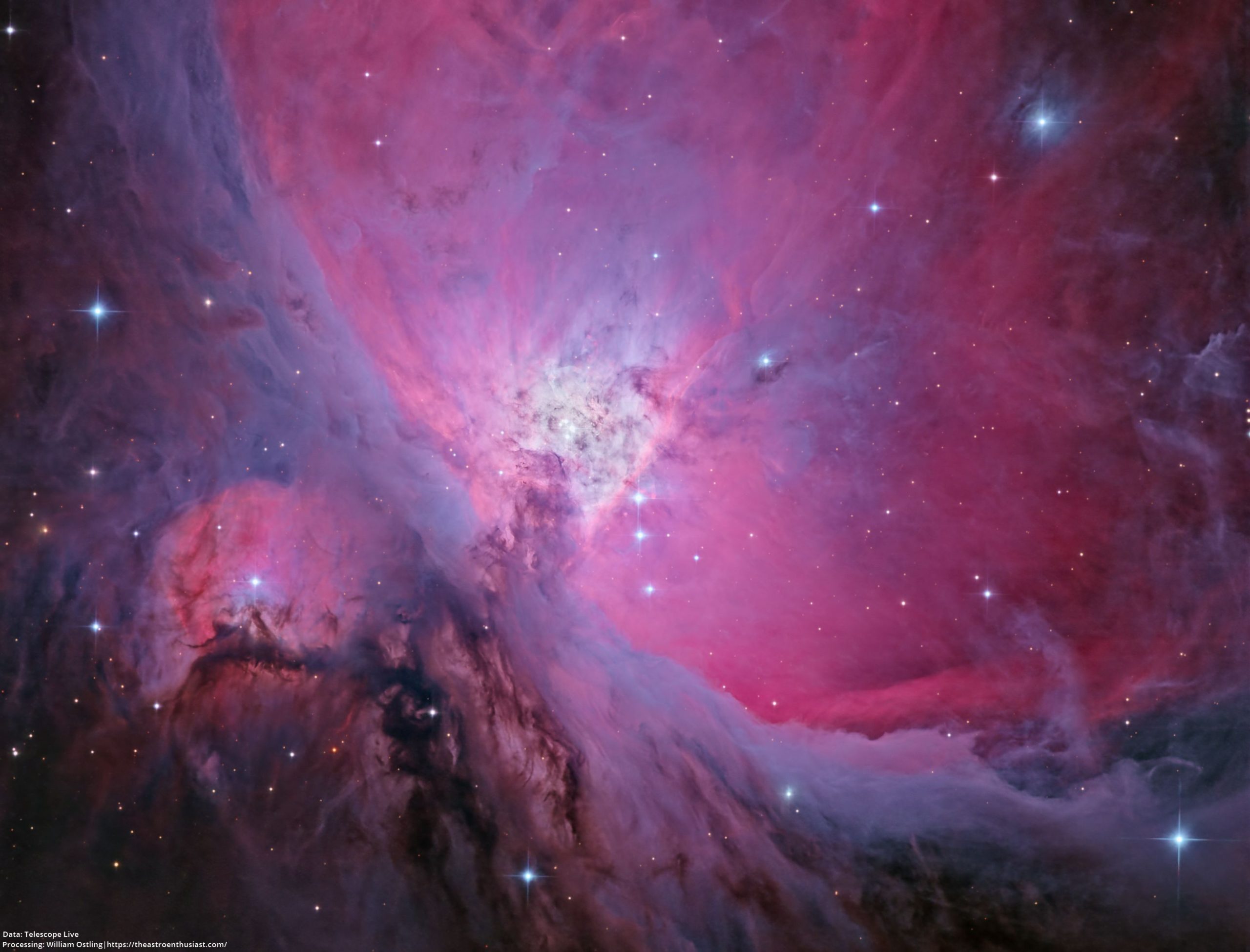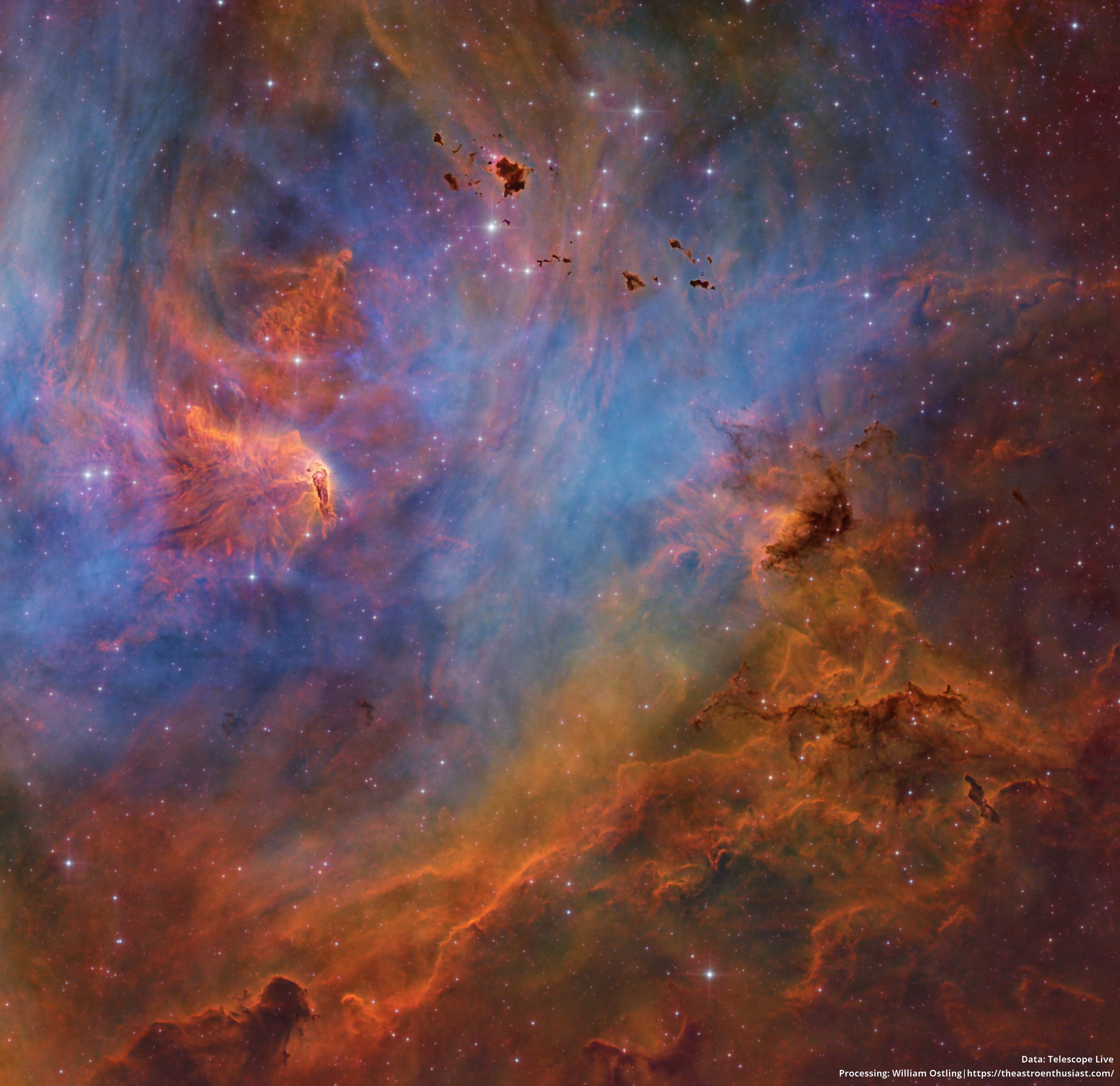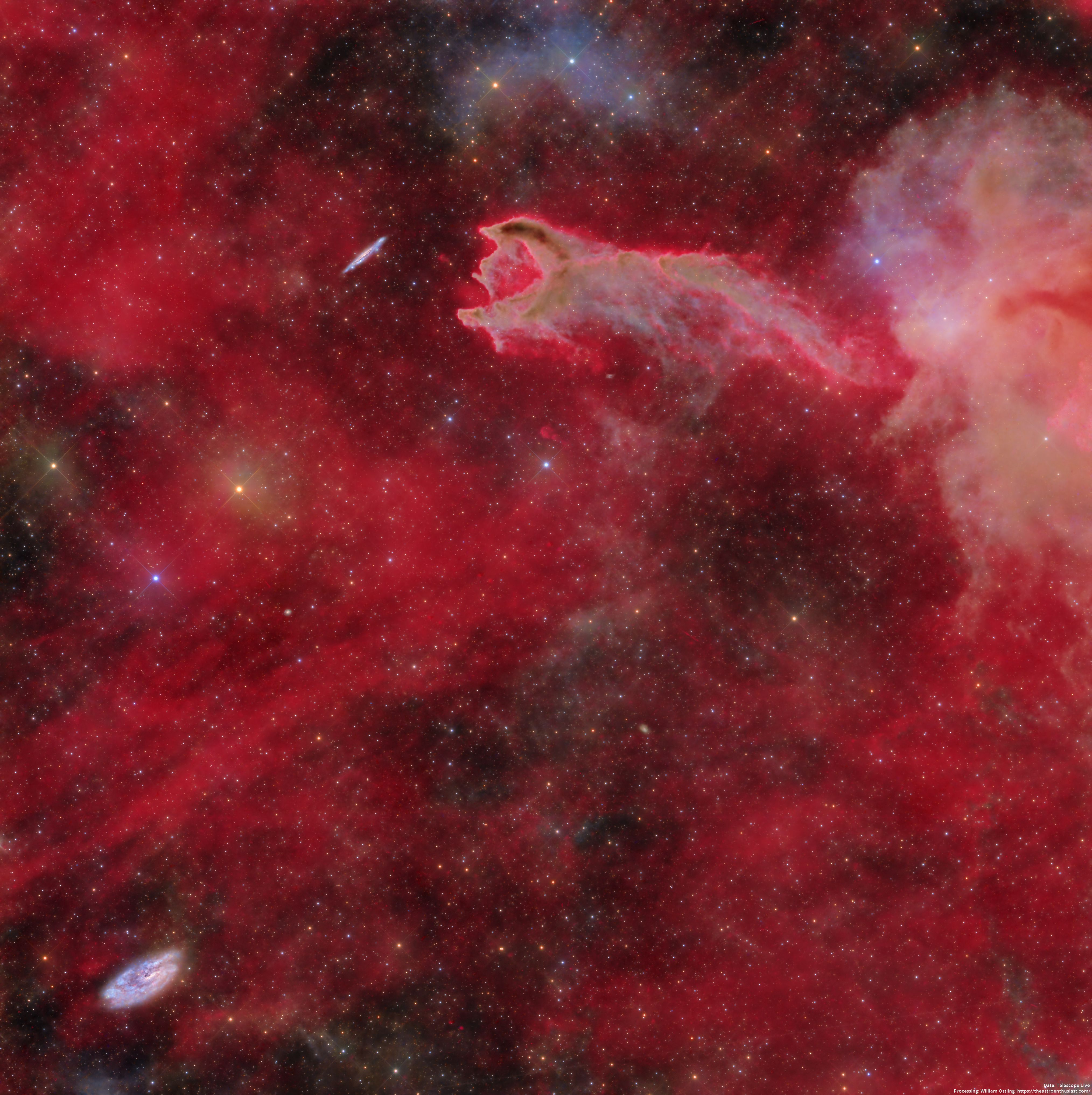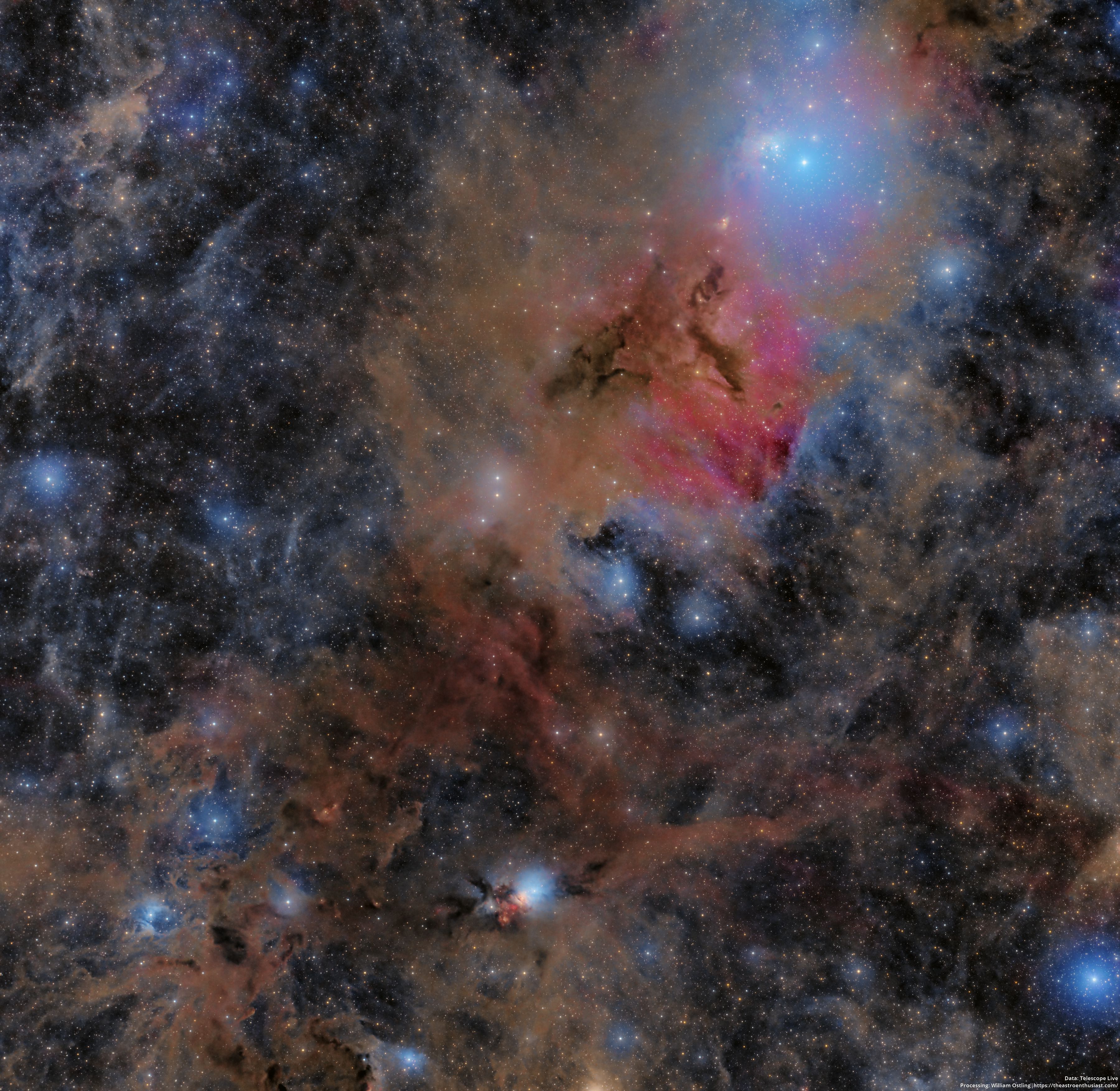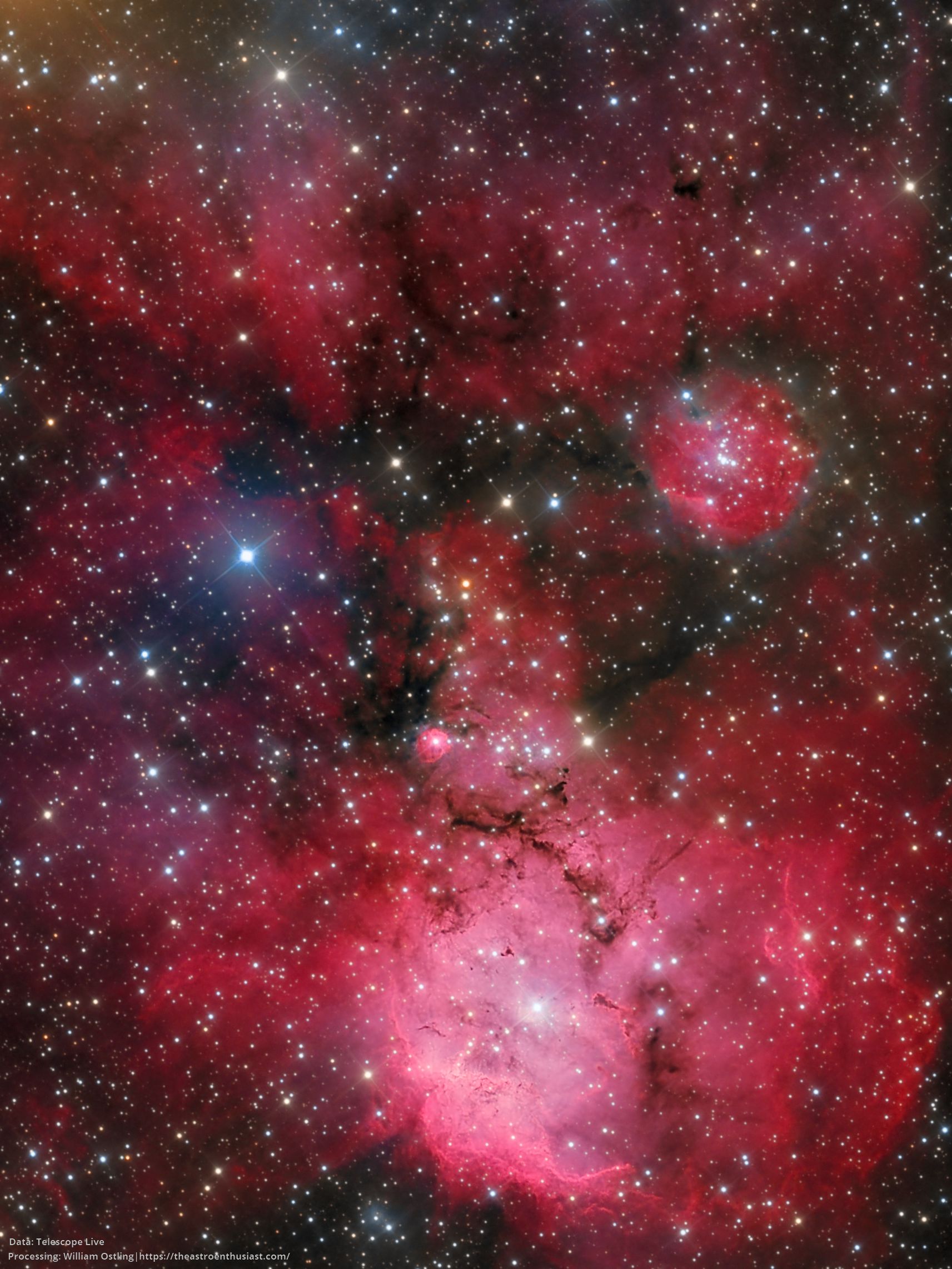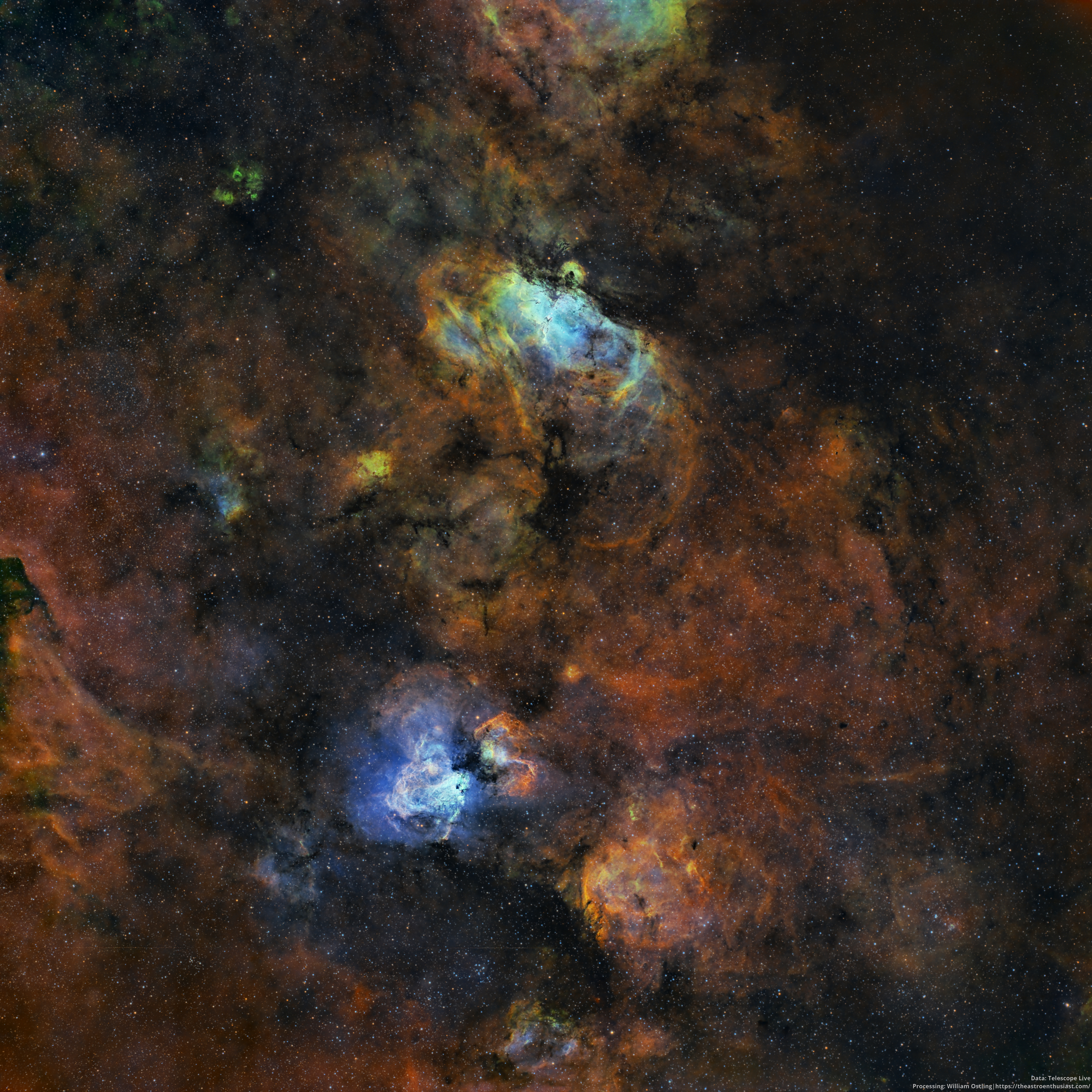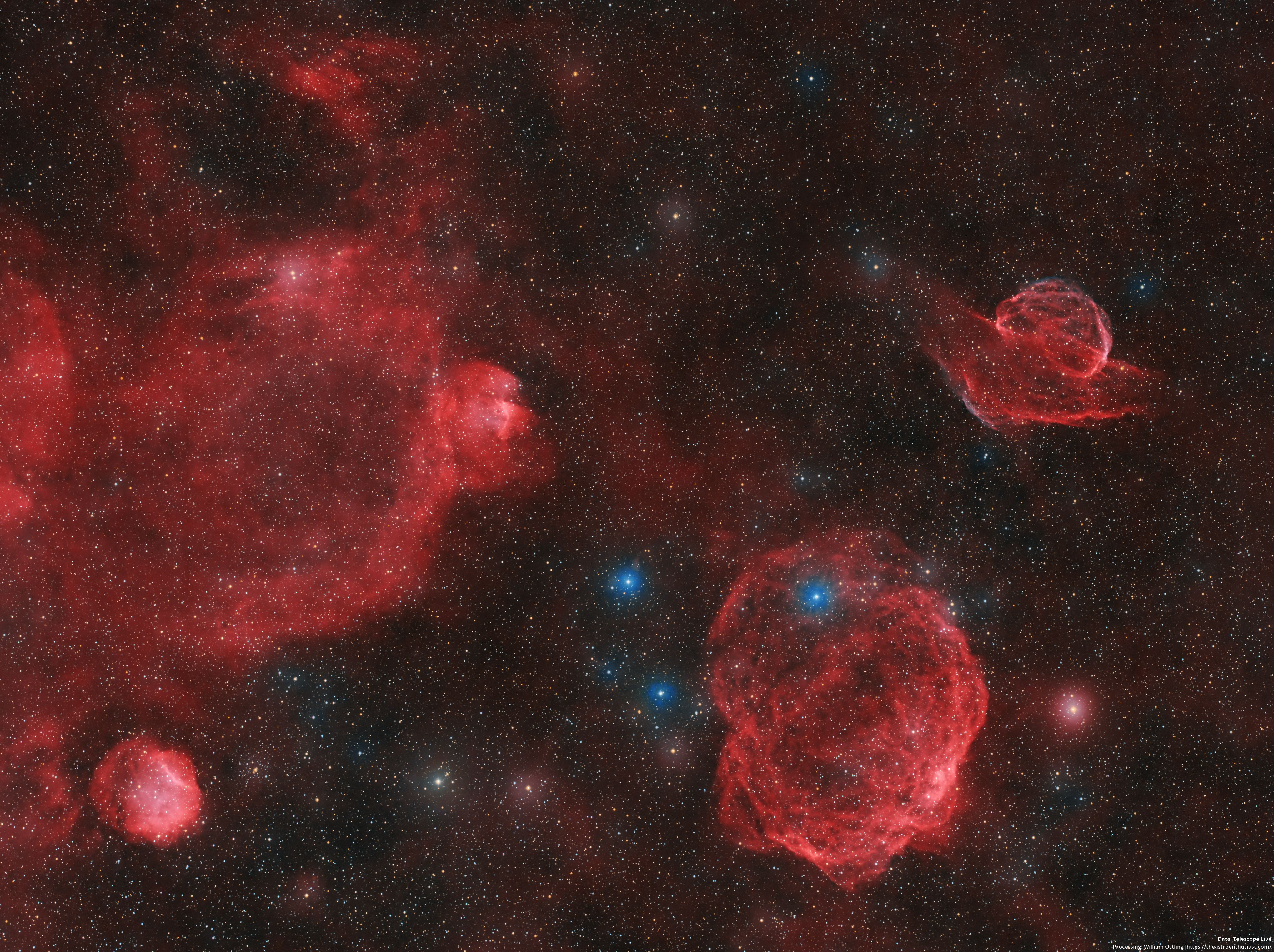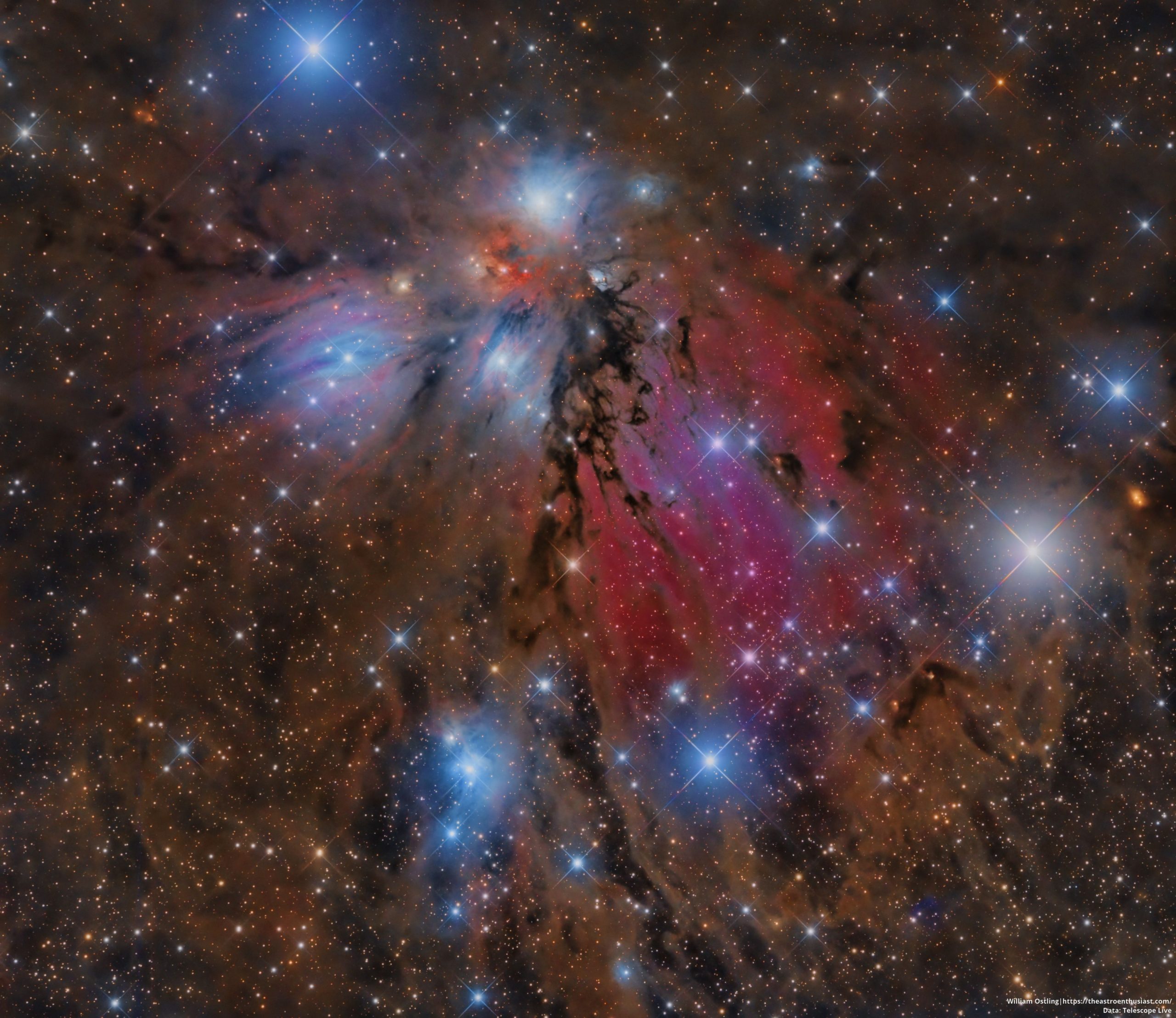Processing an ultra deep 393h collaboration of M81/M82
Image: Gigapan link here: https://www.gigapan.com/gigapans/232382 I highly recommend zooming in on all of the smaller background galaxies! Image with HII This image has all HII data from the VLA added in blue-green, which highlights the extent of gravitational interactions. Gigapan link here: https://www.gigapan.com/gigapans/232383 You can view all the details and interesting features of the image here: https://www.astrobin.com/tb0sou/ Processing The processing steps here are a result of an iterative processes where I determined the best methods for this dataset. I processed the entire dataset a total of 12 […]
Read more